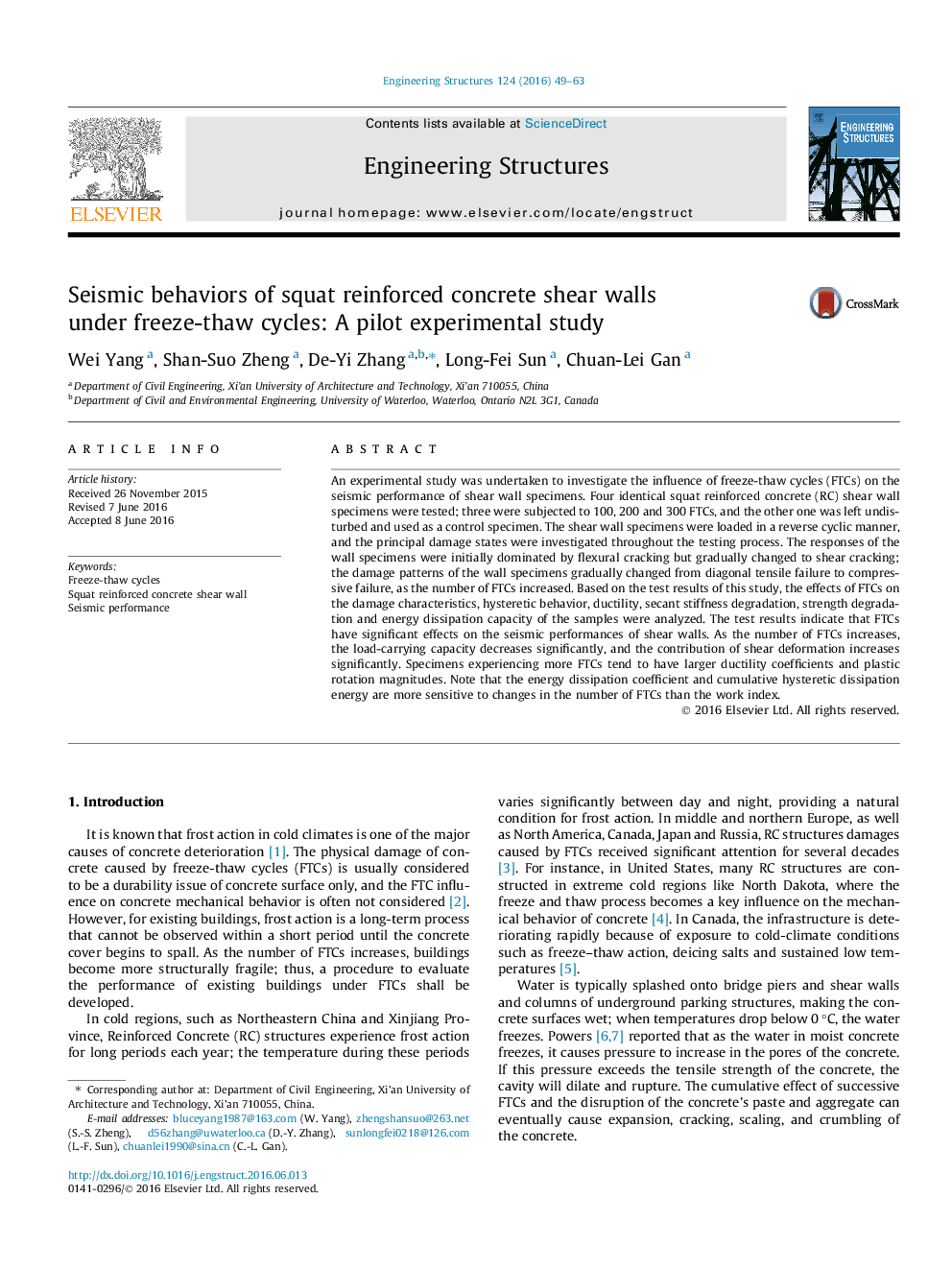| کد مقاله | کد نشریه | سال انتشار | مقاله انگلیسی | نسخه تمام متن |
|---|---|---|---|---|
| 265612 | 504320 | 2016 | 15 صفحه PDF | دانلود رایگان |
• Squat RC shear walls under freeze-thaw cycles are tested under cyclic reversal loading.
• Frost cracks, damage process and failure patterns of the specimens are observed.
• Effects of frost action on seismic behavior of the specimens are investigated.
• Load-carrying capacity and secant stiffness of the specimens decrease due to the frost action.
• Contribution of shear deformation to total displacement increases due to the frost action.
An experimental study was undertaken to investigate the influence of freeze-thaw cycles (FTCs) on the seismic performance of shear wall specimens. Four identical squat reinforced concrete (RC) shear wall specimens were tested; three were subjected to 100, 200 and 300 FTCs, and the other one was left undisturbed and used as a control specimen. The shear wall specimens were loaded in a reverse cyclic manner, and the principal damage states were investigated throughout the testing process. The responses of the wall specimens were initially dominated by flexural cracking but gradually changed to shear cracking; the damage patterns of the wall specimens gradually changed from diagonal tensile failure to compressive failure, as the number of FTCs increased. Based on the test results of this study, the effects of FTCs on the damage characteristics, hysteretic behavior, ductility, secant stiffness degradation, strength degradation and energy dissipation capacity of the samples were analyzed. The test results indicate that FTCs have significant effects on the seismic performances of shear walls. As the number of FTCs increases, the load-carrying capacity decreases significantly, and the contribution of shear deformation increases significantly. Specimens experiencing more FTCs tend to have larger ductility coefficients and plastic rotation magnitudes. Note that the energy dissipation coefficient and cumulative hysteretic dissipation energy are more sensitive to changes in the number of FTCs than the work index.
Journal: Engineering Structures - Volume 124, 1 October 2016, Pages 49–63
